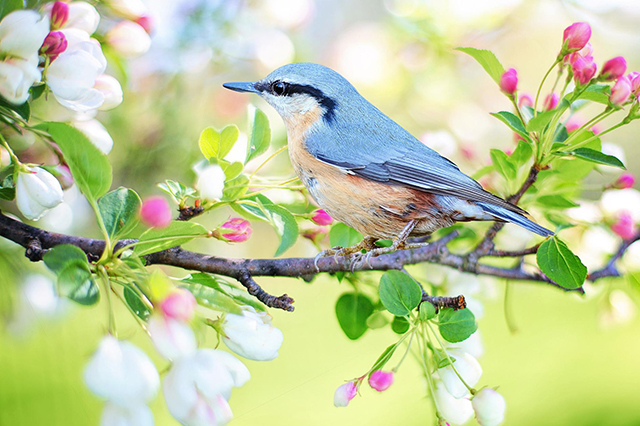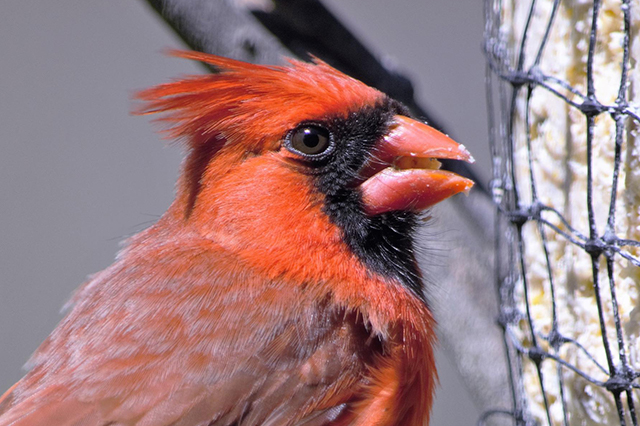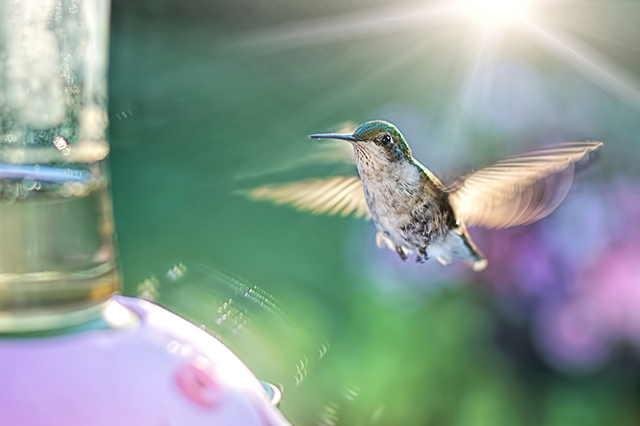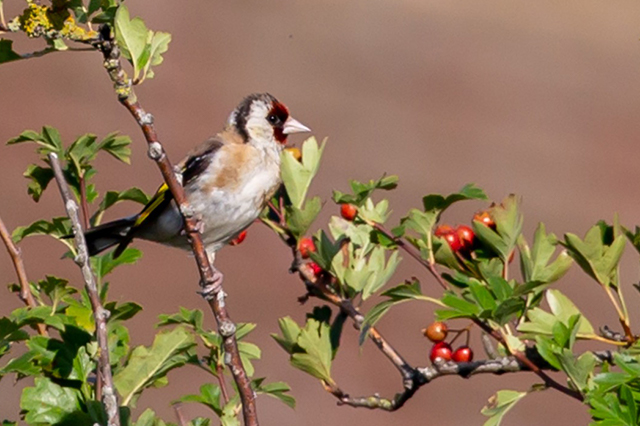How To Attract Birds to Your Garden
Prevent growing a plain and boring garden without any bird attractions. Knowing what birds are attracted to will help you get the right plants and features in your garden to keep them coming around through the seasons.

gardeninginfo-online.com gathered information on what plants, features, and food you can add to your garden to attract multiple bird species.
Birdbaths and Water Features
Water is essential for bird survival, and while a simple birdbath can provide ample space for drinking and preening, more elaborate designs like birdbath fountains have many benefits and can attract more birds to any yard and garden.
Since birds find moving water practically irresistible, fountains are a great addition for you. Any type of fountain or water pump will work well. However, solar-operated fountains are the perfect choice because they eliminate the need for extension cords, electrical outlets, and can be easily moved anywhere the sun shines.
Note: Since running or falling water naturally humidifies the air, birds will want to sit close to it. When installing your water feature, create areas for your feathered visitors to land or perch, hydrate, and rest.
Tip: The most attractive birdbaths and water features will mimic nature’s natural birdbaths and water flows like puddles and shallow pools in slow streams.
Bird Feeders

Besides water, birds will also frequent locations where they know food is readily available. Here are a few ways to attract birds with food:
Hopper Feeders – A hopper bird feeder is a type of feeder that holds birdseed in a “hopper” and dispenses it into a tray at the bottom of the hopper. As birds consume the seed, the hopper replenishes the bottom tray, aided simply by gravity.
Hopper feeders are attractive to most birds, including:
- finches
- Jays
- Cardinals
- Buntings
- Grosbeaks
- Sparrows
- Chickadees
Note: This type of feeder is also a squirrel magnet.
Peanut Feeder – Peanut feeders are typically shaped like a tire or tube, which can be loaded with peanuts (with or without the shell). These feeders can also be found in round wreath shapes. These types of bird feeders have openings that make birds (and sometimes squirrels) work to get the peanuts out. Blue jays, nuthatches, and woodpeckers particularly love peanut feeders.
Sugar Water Feeder – Sugar water feeders are extremely popular and are typically found in a few standard shapes, including glass bottle, tube, flower, and round dish. Regardless of the shape you select, this type of bird feeder is an irresistible magnet for those incredible hovering hummingbirds.

Log Feeder – Log feeders are amazing if you are looking for an inexpensive DIY project. Take a small log and drill a few medium-sized holes in the side. These holes are for stuffing suet or peanut butter for the birds to eat. Such logs provide a natural perch and are great for woodpeckers, blue jays, and nuthatches.
Nyjer Feeder – These feeders are commonly found as mesh or sock feeders. Due to the nature of these feeders, look for one with a seed catching tray at its bottom. This feature helps prevent the extra mess and wasted seeds from falling to the ground. The seed tray will catch any uneaten fallen seed and provide the birds with an additional opportunity to feed. These feeders are known to attract finches, sparrows, and chickadees.
Note: Nyjer is a small, thin, black seed from the African yellow daisy (Guizotia abyssinica). While commonly referred to as thistle seed, it is not related to the thistle plant.
Flowering Plants
Another way to attract birds to your garden is to grow the flowering plants they love. The following are a few of the most popular flowering plant species that attract birds.
Sunflower (Helianthus spp.) – Plant this easy-to-grow annual in full sun near windows and watch migrating songbirds devour their seeds.
Daisy (Bellis perennis) – These garden favorites form an abundance of nutritious seeds vital for finches, sparrows, cardinals, and towhees winter survival.
Virginia Creeper (Parthenocissus quinquefolia) – This vine produces a fruit that is a vital food source for winter birds, like mockingbirds, woodpeckers, and blue jays.
Shrubs with Berries for Birds
Planting shrubs in your garden and around your landscape can offer vital refuge for multiple bird species. Planting berry-producing shrubs gives birds the added benefit of a nutritious meal while taking refuge in its branches. Consider the following species:
Elderberries (Sambucus) – Elderberries are a group of plants that are ideal for birds. They flower in late spring and are covered with large clusters of berries throughout the summer.
Holly (Ilex) – Hollies are a group of plants that specialize in attracting birds. The added bonus is that with the festive and abundant red berries, this species announces the coming of winter and the holiday season.

Lilac (Syringa) – Lilacs are crucial for their blooms because they provide an abundance of nectar early in the season when food supplies are scarce for hummingbirds. Hummingbirds love the nectar just as much as humans love lilac’s intoxicating fragrance.
Attracting Birds to Your Garden
In this article, you discovered information about which garden features, plants, shrubs, and feeders are best at attracting birds.
By attracting birds to your garden with water features, plants, and shrubs, you are providing them with water, nutrients, and shelter.
Ignoring the need to attract birds to your garden will leave you with a plain and monotonous landscape.
Sources:
ny.audubon.org/conservation/choosing-bird-feeder
bellarmine.edu/faculty/drobinson/holly2.asp
mortonarb.org/plant-and-protect/tree-plant-care/plant-care-resources/plants-and-shrubs-that-attract-birds/
nationalgeographic.com/books/article/top-10-plants-to-attract-songbirds